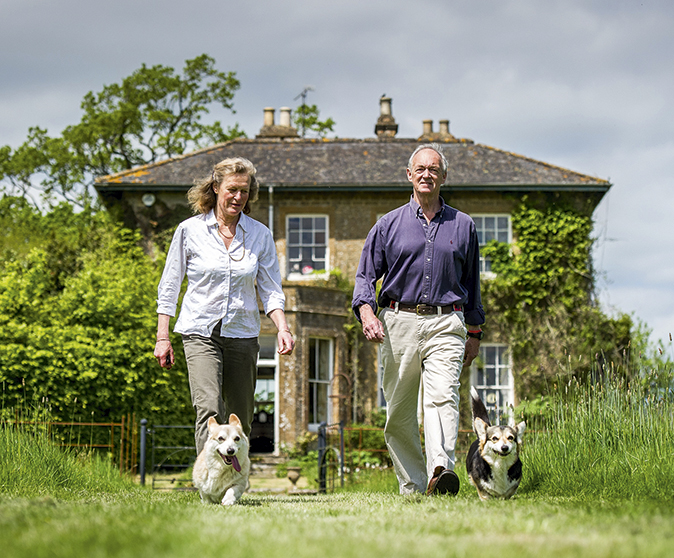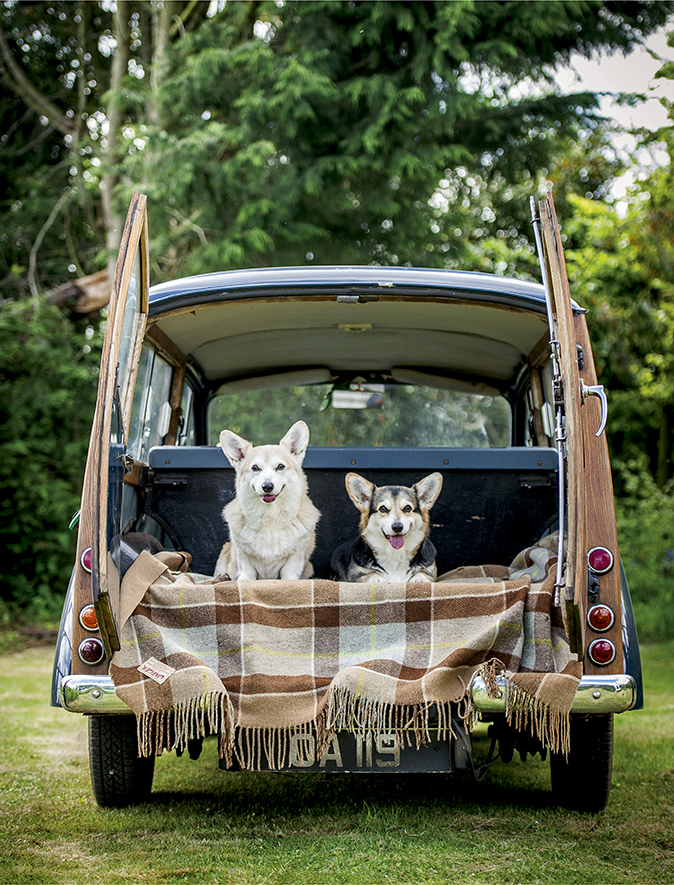Corgis: Her Majesty's loyal subjects
Matthew Dennison celebrates this lively, faithful breed that devotees insist won’t, in fact, be snapping at your heels.


Of all the dogs on the Kennel Club’s (KC) Vulnerable Native Breeds list, none has the celebrity endorsement of the Pembroke Welsh corgi. These handsome, busy little dogs have been the favourite breed of The Queen for more than eight decades. It was in 1933 that her father presented his family with chestnut-coated Dookie, acquired from a breeder in Surrey, then, 11 years later, on her 18th birthday, the then Princess Elizabeth received a corgi of her own, eventually called Susan. More than 70 years later, both The Queen’s remaining corgis, Willow and Holly, are Susan’s descendants, a canine bloodline spanning 14 generations.
The royal imprimatur has not guaranteed the long-term safety of this ancient Welsh breed. The KC’s Vulnerable Native Breeds list records British breeds whose puppy registrations fall below 300 puppies a year; the At Watch list records breeds registering fewer than 500 puppies annually. Last year, the red-coated Pembroke corgi successfully moved up to the At Watch list, after increasing its puppy registrations to 366.
Its cousin, the Cardigan corgi, whose coat is typically any colour but red, registered only 124 puppies in 2015 and remains among our most endangered breeds. These troubling statistics are a source of considerable concern for corgi owners and breeders.

‘Corgis are very loyal and very intelligent,’ owner Lucy Badham-Thornhill tells me. Mrs Badham-Thornhill acquired her first Pembroke corgi at the age of 11; she became the inseparable companion of her adolescence. following her marriage, ‘there was only one breed to be considered’ and Mrs Badham-Thornhill’s corgis Millie and Mole, who are mother and daughter, are the third and fourth generation of her current bloodline.
‘I admire corgis because they’re sensible: they know when things matter. And I believe that they can be trained to do almost anything. They have incredible stamina and strong personalities, but they have neither the hound stubbornness nor the terrier hysteria.’

‘Today’s corgi is also a friendly,’ says owner and breeder Carole Turner, who has owned corgis for more than 50 years. Indeed, the breed standard for Pembroke corgis insists on an outgoing and friendly nature. As owners are quick to acknowledge, such characteristics are at odds with popular perceptions of the breed. ‘Corgis have a reputation for being “nasty, snappy little dogs”,’ Mrs Badham-Thornhill admits. ‘This—and their big bark—makes them very good guard dogs, wonderful deterrents, but my dogs are certainly not snappy.’
For Mrs Turner, corgi snappiness emerged as an adverse effect of royal endorsement. ‘Indiscriminate breeding followed press photographs of The Queen as a child with a corgi. They were puppy farmed and they acquired a reputation for snappy behaviour. Breeders have since worked hard to establish a good temperament, but unfortunately, if a royal corgi nips a footman or member of the royal household, it attracts a degree of media coverage.’
Exquisite houses, the beauty of Nature, and how to get the most from your life, straight to your inbox.
Corgis have a long history and the origin of the breed is uncertain. Official histories trace a sturdy, low, long-backed dog of Cardigan corgi type to the 12th century; Welsh folklore suggests corgis were the enchanted dogs used by fairies and elves to draw their coaches. Farmers first used corgis to clear grazing space for cattle and to defend poultry and fowl from predators; in some cases, they were used like terriers to keep down vermin levels (the royal corgis have proved themselves adept at rabbit- ing over the years, particularly at Balmoral).
The corgi’s better-known purpose as a herding dog, used to work and direct cattle, came later. Contrary to popular perception, corgis worked as much by barking as by nipping cattle’s heels. Certainly, their short stature defended them against being kicked.

Even as family pets, corgis retain their herding instinct. Mrs Turner remembers walking her corgis along a bridle path and coming across two girls out riding, who were experiencing problems with cattle. ‘The girls were trying to get out of the field, but the cattle had blocked their way to the field gate. One of my corgis, Sadie, slipped under it and purposefully moved the cattle back, while I opened it so the riders could get out. Through all the chaos, Sadie calmly kept the cattle in place and out of the way.’
She continues: ‘Some years later, I was walking Sadie’s grandson, Lewis, who, unusually for a Pembroke corgi, didn’t like mud. A cow had swallowed a carrier bag, which had somehow ended up in the field. While I removed the carrier bag from the distressed cow’s throat, Lewis sturdily waded through the mud to keep the remainder of the nosy herd out of the way.’
Mrs Badham-Thornhill remembers pet rats belonging to her son Tom repeatedly escaping. Her then corgi Floss tracked down the errant rodents and kept watch over them until Tom came to collect them. ‘She never made any effort to pick them up, chase or tease them.’
Despite their rural origins, corgis have proved themselves versatile in adapting to modern family life. Few need extensive exercise, although they do enjoy robust country walks, and their dietary requirements are simple and modest. This is not to say that they are always content with the corgi-size meals their owners give them. ‘They are very greedy,’ Mrs Badham-Thornhill explains. ‘This is an advantage in training. One of my corgis once ate 11% of her bodyweight in stolen milk chocolate. She wasn’t even sick. As an owner, it’s important to recognise that corgis’ ability to adapt to very little exercise can make them susceptible to weight problems.’

‘For me, corgis are pretty much perfect,’ says Mrs Turner, a sentiment The Queen would surely echo. ‘They don’t sulk, they’re up for anything and they’re protective of everyone.’ Mrs Turner currently has four Pembroke corgis, whose ages range from 14 months to 10 years. They are, she says, a typical example of big dogs in small bodies and wonderfully cheerful.
The Queen ceased breeding corgis some years ago and it’s possible that her current dogs will not be replaced. So far, no younger members of the Royal Family have shown signs of sharing The Queen’s enthusiasm. That baton must pass to loyal subjects. These splendid little dogs ought not to languish in the doldrums.
For details about corgi breed societies, visit www.thekennelclub.org.uk
Country Life is unlike any other magazine: the only glossy weekly on the newsstand and the only magazine that has been guest-edited by His Majesty The King not once, but twice. It is a celebration of modern rural life and all its diverse joys and pleasures — that was first published in Queen Victoria's Diamond Jubilee year. Our eclectic mixture of witty and informative content — from the most up-to-date property news and commentary and a coveted glimpse inside some of the UK's best houses and gardens, to gardening, the arts and interior design, written by experts in their field — still cannot be found in print or online, anywhere else.
